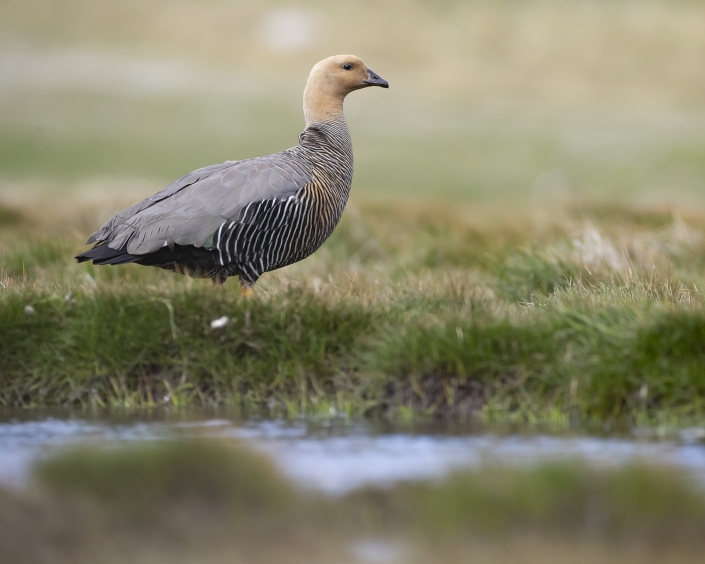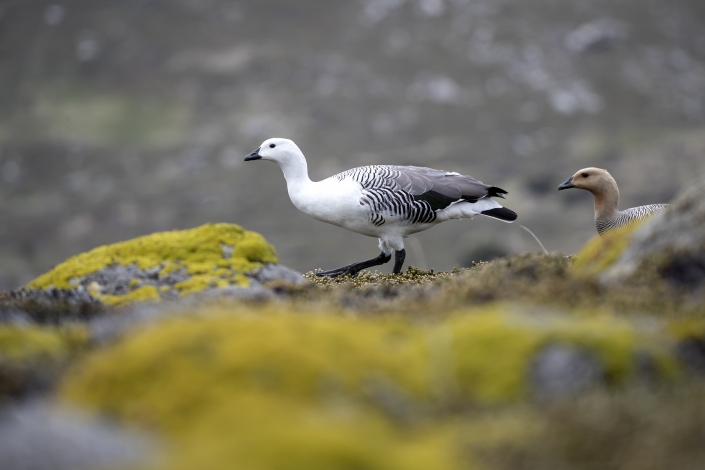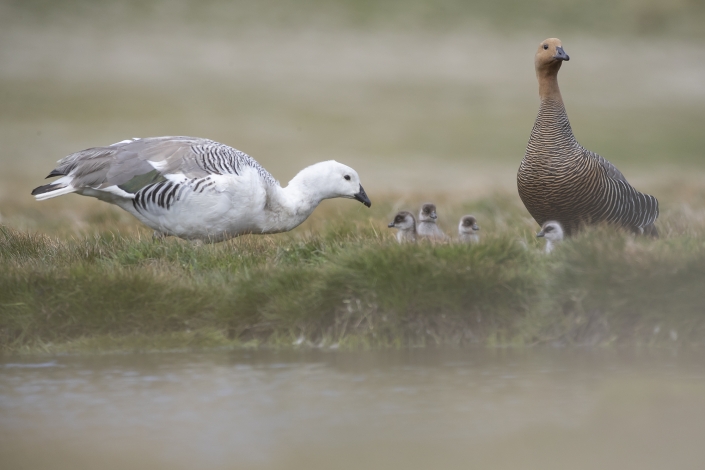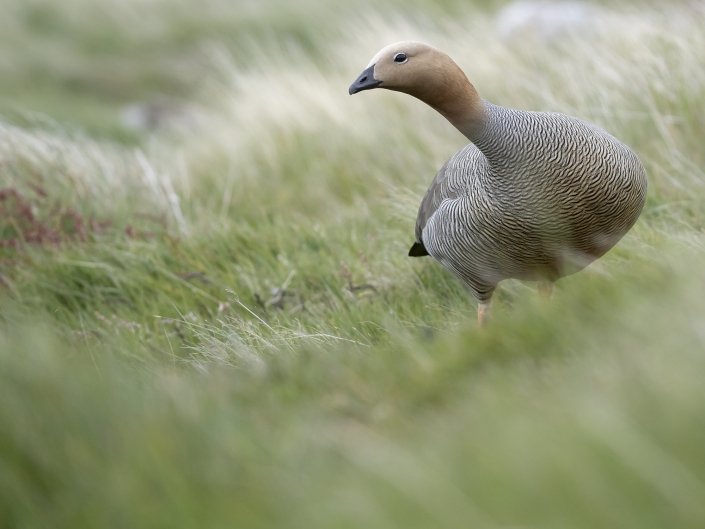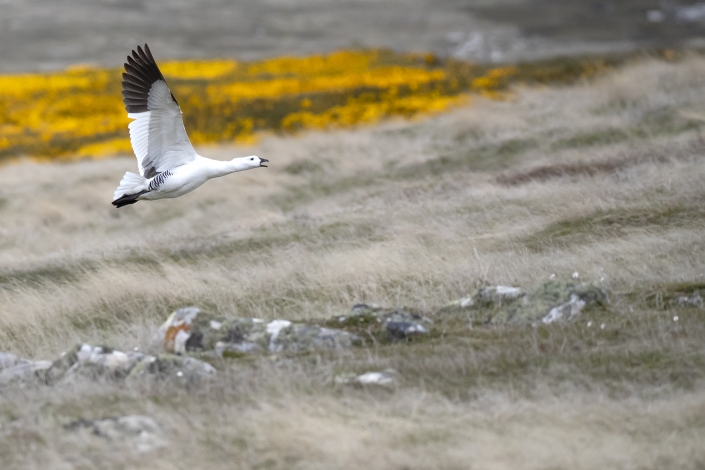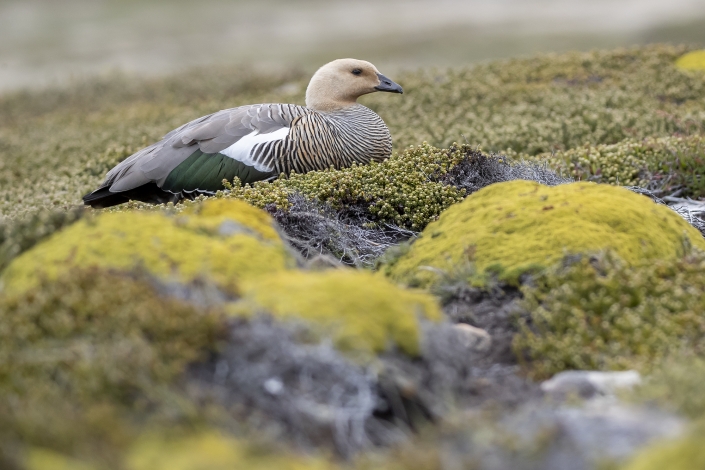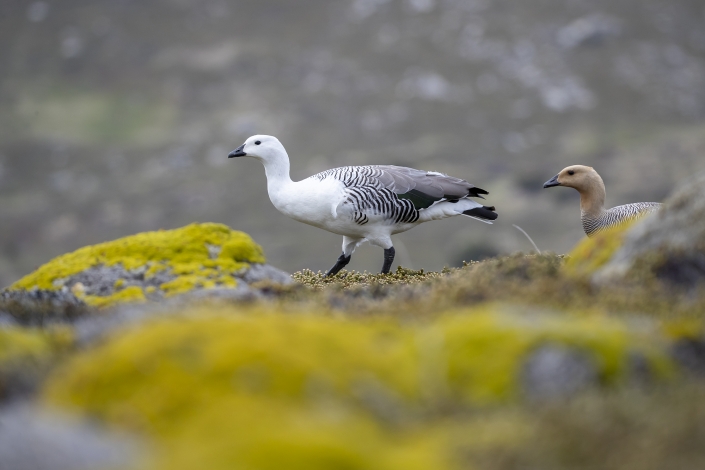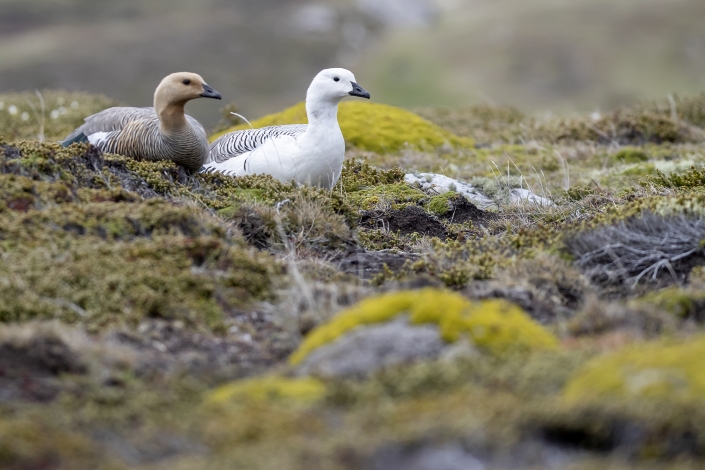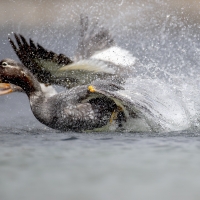This post is also available in: Swedish
Upland goose – Chloephaga picta
Upland goose – Chloephaga picta
is a sheldgoose of the shelduck-sheldgoose subfamily of the Anatidae, the biological family that includes the ducks and most duck-like waterfowl such as the geese and swans. This bird is indigenous to the southern part of South America. These birds are 60–72.5 centimetres (23.6–28.5 in) long and weigh 2.7–3.2 kilograms (6.0–7.1 lb). Males have a white head and breast, whereas the females are brown with black-striped wings and yellow feet, and could be mistaken for ruddy-headed geese. A greenish-bronze speculum is located on the inner secondary flight feathers of the adult male.
In Chapter VI of On the Origin of Species, author Charles Darwin noted that the upland goose has webbing between its toes that appeared to be “rudimentary in function, though not in structure”, and concluded that this was a vestigial anatomical feature in this bird.
They are found in southern temperate grasslands, arid lowland scrubs, pastures and agricultural lands, from sea level up to around 1,500 meters. There is also a sizeable introduced population on the sub-Antarctic South Georgia Island.
It sounds like this
Recording by Andrew Spencer from Xeno canto



